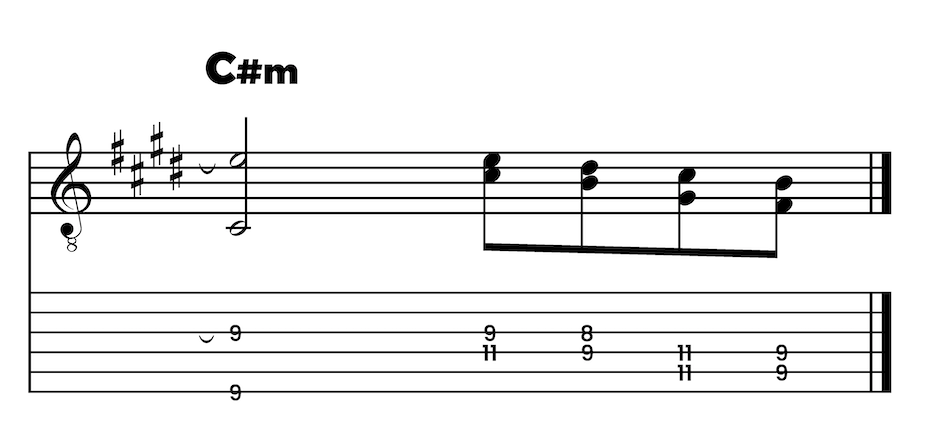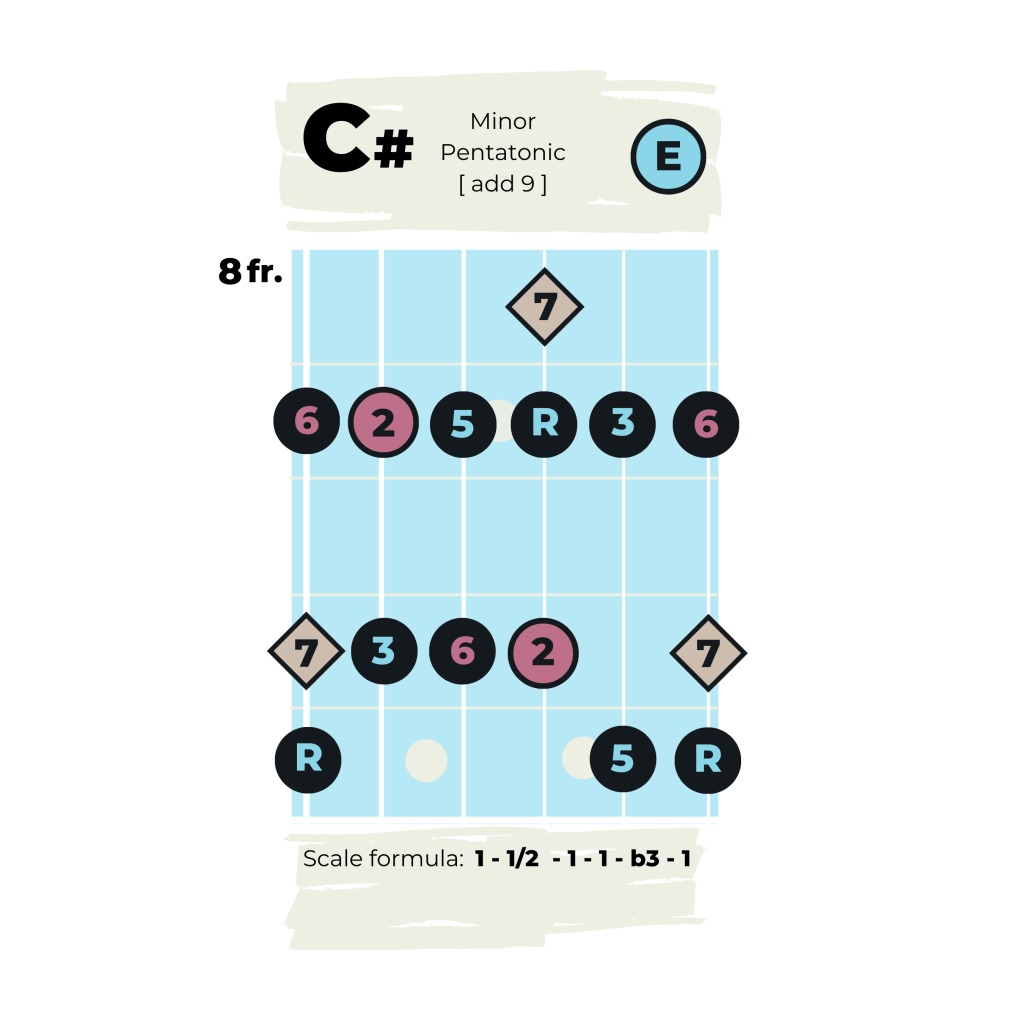
Studies for electric guitar
The music theory behind “Slow Dancing in a Burning Room”, as shown by John Mayer a moment ago via his TikTok channel. A short etude idea, standard notation and chord diagrams for another perspective on a composite minor pentatonic scale [ + 9], contrary motion from IV to I and how all this translates to the guitar’s fretboard.

The verse of the song is a nice example of how to connect diatonic harmonies [ Vi – IV – I ] with simple yet expressive lines and voicings. While the melody establishes a minor pentatonic sound, the descending double stops over C# minor sport an added 9 ‘color note’ [ D# ]. In the key of E, this note hints at a dominant function [ 3rd of B7 ].
However brief the note sounds, it provides for more harmonic information or ‘musical drama / tension’ over the C# minor chord tonic function [ Vi ].

Consequentially, the voicings for IV and I functions continue this principle; they are basically double stops with embellishments (again with the add 9), as opposed to more complete ‘chord grips’.


The etude over the chord changes shows more melodic ideas and a couple of rhythmic / percussive techniques common in contemporary styles. Since this one was based on an improvisation, and “so you can learn more than just to play the song” – there’s no need to play all the notes ‘as written’.
It’s only one way of putting it, gonna add a version of mine – but first, let me hear your take!
A quick overview of how to use those chord diagrams to your benefit: these are intended for the ‘learning mode’, mapping out how tonal music theory translates to the fretboard as opposed to already having established suggested concepts, mentally and physically, via muscle memory.
The colors are helpful to visualize where to access a given sound in a tonal context, similar to how pianists learn to “navigate” the keyboard, only adapted for the more complex nature (options!) of the guitar fretboard.

There’s obviously no need to ‘think’ in arbitrary color choices, especially when practicing and performing. It’s more along the lines of a manual for music theory concepts and how to use them via that 6-string interface.
The idea is to better understand tonal relationships and to develop a more flexible sense of how to access specific sounds and how to connect them more fluently and deliberately.
It’s great to know where all those C#s are on the fretboard; and I’d suggest to learn all the note names and their place accordingly, for a number of musical applications – more importantly though, e.g. to come up with your own ideas and navigate them more freely, it’s crucial to understand and hear what a specific note’s role and function is, in context.

